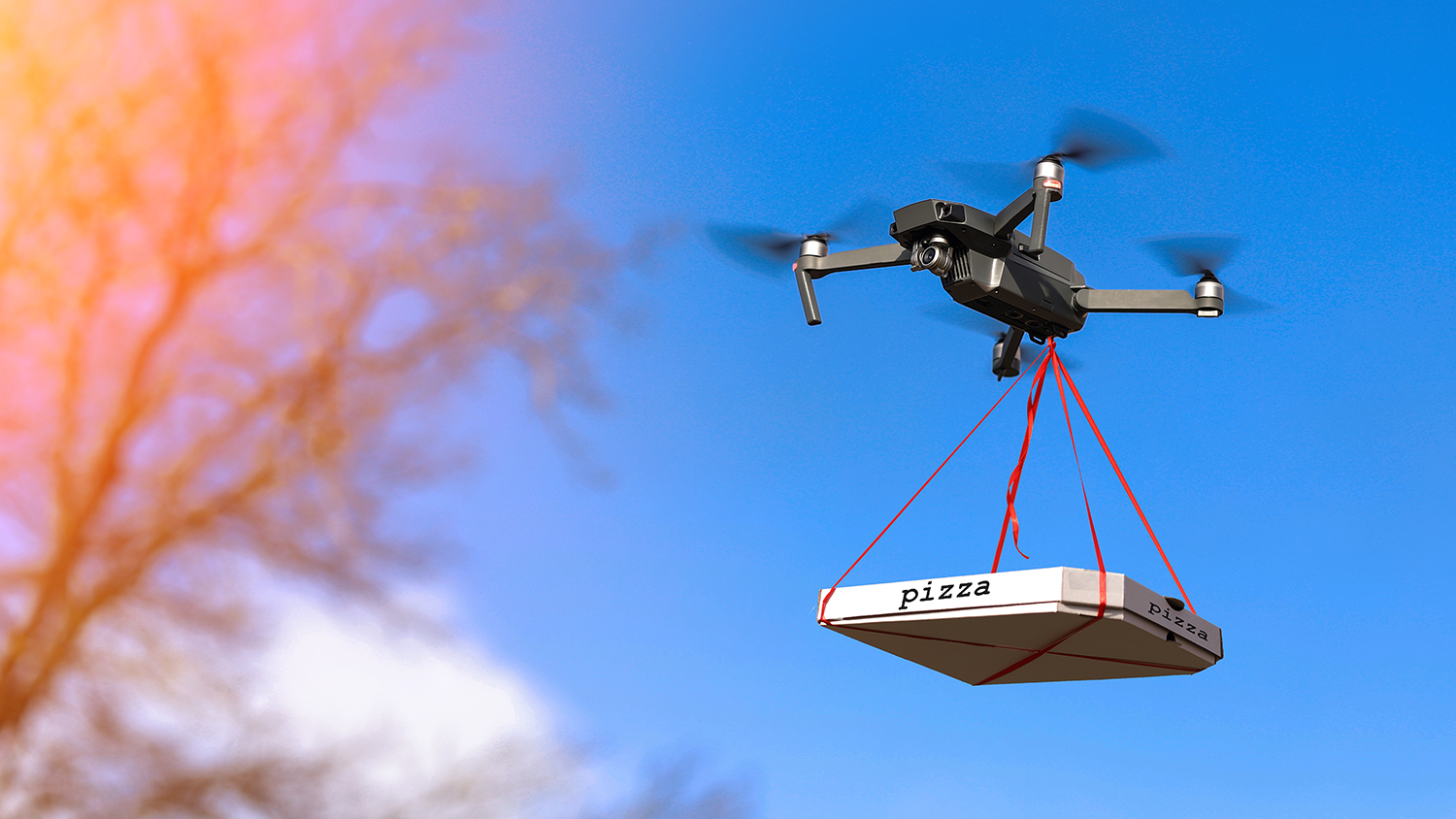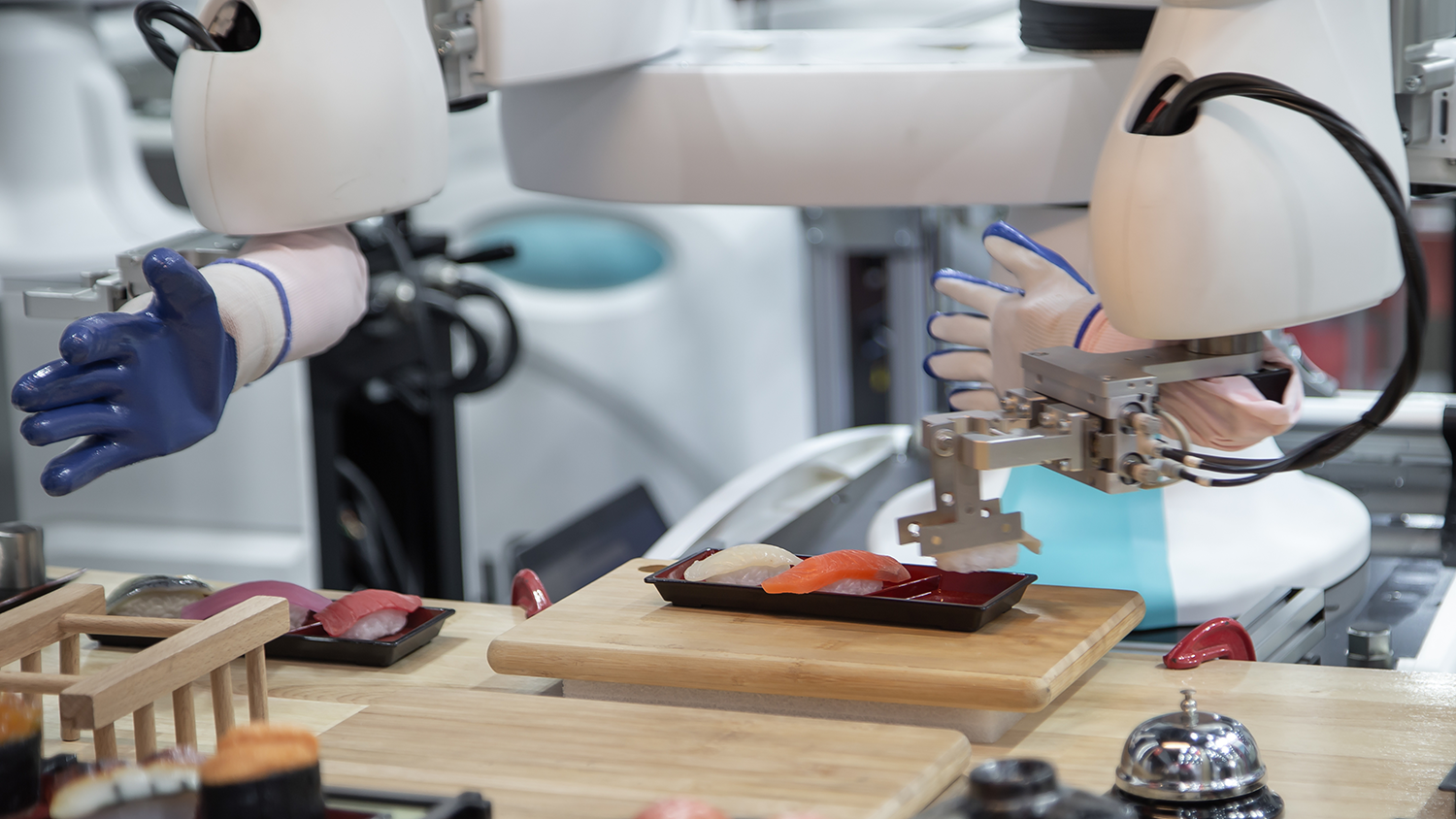By Alex Riley, Contributor
The restaurant industry has a history of being extremely slow to adopt new technologies and digital solutions – despite knowing it’s good for business and improves their operations. However, food and beverage establishments have been compelled to look beyond the usual in the last two decades. Many eateries have resorted to technology, albeit grudgingly, to adapt to a new reality in the last few years. One that incorporates more hygienic safeguards.
Big restaurant chains and a growing number of entrepreneurs are being forced to digitize their operations to overcome labor shortages and tackle challenges that are eating into their margins. They are competing against each other to set new service standards to attract tech-savvy customers. According to Statista, the global food technology market size in 2019 was $220.32 billion U.S. dollars, and the market is forecast to exceed $342 billion U.S. dollars by 2027.
Restaurants were able to keep many of their new digital consumers (via online delivery and ordering) as the vaccines became available and customer mobility expanded. They developed increasingly multichannel tactics to innovate the on-premise guest experience.
Let's look at the essential technology trends that are gaining pace and could take center stage now that 2022 has arrived.
6 Key Restaurant Technology Trends
Food delivery robots and drones
Prep lines automation
Virtual restaurants
Chatbots with NLP for restaurants
Self-order kiosks
AR-VR Technology
Food Delivery Robots & Drones
One of the most talked-about technologies is autonomous cars in food delivery. Because it decreases labor expenses and eliminates the tipping system, this could solve difficulties for both operators and customers. According to Statista, the global online food delivery sector was 107.44 billion US dollars in 2019, expected to grow at a CAGR of 11.51% to reach 154.34 billion US Dollars.
Domino's has previously put self-driving cars to the test in Miami and Las Vegas. It is now being trialed in Houston, TX. Drone delivery is already being tested by major corporations like Google, Amazon, and Uber. Although robotics and delivery technologies have great potential, they must first be formally regulated. Some logistical and weather issues must be addressed. The delivery drone will need a safe landing spot and will not fly in bad weather.
We don’t expect this to become widespread in 2022, but expect to hear some gains in the technology as the year marches on.
Prep-Line Automation
Automation enhanced by AI/ML is one of the newest technological advancements. It expands its back-of-the-house presence, assisting cooking establishments in increasing capacity and operating efficiency.
Restaurant managers can overcome labor shortages and spare workers from long monotonous and repetitive work hours by automating food preparation operations that require cooks to perform predictable physical activities.
While many restaurant chains already use various kinds of robot cooks in their kitchens, several robochefs are promoting themselves on tech shows:
The automated kitchen, created by Moley Robotics, is equipped with robotic arms that mimic human movements. They can stir, mix, adjust cooking temperature, etc. Take a look at the following video for a better understanding.
Cooki, the cooking robot created by Sereneti Kitchen, has an arm that can prepare meals from pre-portioned ingredients. Here is the video of Sereneti Kitchen showcasing the working of their robot.
Chef Cui, developed by Cui Runguan, is a Chinese three-foot-tall toy-like robot that can slice a ball of dough into strips of noodles of a consistent length and size.
The capacity to prepare endless volumes of food rapidly, uniformity of flavor and quality, cleanliness, and safety are all evident benefits of using robochefs. Most restaurant owners will invest in robot cooks as soon as the technology becomes more inexpensive, allowing them to take advantage of an effective combination of human abilities and automation. This tendency has a significant impact on restaurant cooking equipment suppliers.
Virtual Kitchen
Ghost kitchens, cloud kitchens, or dark kitchens are frequent names for virtual kitchens. This kitchen is a more cost-effective restaurant variant that focuses solely on off-premise sales. In simple terms, a ghost kitchen is usually only available for delivery. However, some may offer a takeaway. The big savings in this model is not paying for on-premise dining space. Virtual restaurant businesses must overcome the barrier of establishing a robust online presence and delivering POS systems. According to Statista, the worldwide cloud industry was valued at USD $43.1 billion in 2019 and is expected to grow to USD $71.4 billion by 2027. There's still a lot of work to be done on an engaging website, active social media, and collaborations with food delivery apps development companies and restaurant recommendation sites.
Chatbots with NLP for Restaurants
Chatbots are a relatively new restaurant technology that has gained a lot of traction. They can be built quickly, need little effort, and interface with various communication channels. With natural language processing (NLP) technology integration, existing chatbots may give a tailored experience. They are available 24 hours a day, 7 days a week, to assist customers with placing orders, reserving tables, and responding to FAQs. The following are some of the things your chatbot can do:
Recommend dishes.
Suggest food & drink pairing options.
Process payments.
Share trivia games.
Announce events.
Offer promotions.
And even crack jokes.
Chatbots can help restaurant employees save time while also improving the customer experience. For example, someone working down the street might want to use your chatbot to reserve a table for their lunch. In this situation, you may use the interactive chatbot to collect orders and have them ready to serve when they arrive, saving them time and allowing you to enhance table over-rate during peak hours.
Self-order Kiosk
Self-ordering kiosks drew the most customer attraction last year compared to other technologies. Self-ordering kiosks meet the preferences of the young tech-savvy consumers who are native to digital screens. Quick-serving restaurants are also introducing this technology. Statista's global interactive kiosk market is in 2020, 2021, and 2025. In 2028, the forecast is to reach a size of $45.32 billion dollars with a CAGR of 6.9% from 2021 to 2028. Quick-serving restaurants get the following benefits from the self-serving kiosk:
Automatic upselling. The self-ordering kiosks have all the current add-ons & combo deals available for promotions.
Shorter lines at the counter. By splitting the lines into two parts, you reduce the employee's burden during rush hours and reduce customer wait time.
Better order accuracy. This technology also helps in order accuracy as the customer can see what they’re ordering.
Self-ordering kiosks quick-service restaurants get incremental sales lift and make customer feels comfortable. The benefits of self-ordering devices are getting more visible as more and more restaurants opt for new technology.
AR/VR Technology in Restaurant
AR/VR industry in the F&B industry can't bring down the number of errors, but it can be quickly brought down by real-time rectification. This technology will help reduce the number of human errors caused due to lack of attention or mismanagement.
With AR apps, guests can visualize how the dishes are created and the complete dish before ordering them. To get a clear understanding of this concept, take a look at the video below.
AR technology in restaurants is becoming popular. One of the examples is KabaQ. They provide a complete list of 3D menus, which helps the customer understand the ingredients and the result of the process.
Another example is Magnolia Bakery. The bakery virtually presents beautiful cakes on the table, allowing customers to select the type of cake decoration they want directly on the table through AR/VR. Take a look at the video below.
Another example is of 19 crimes wine by Treasury Wine Estates has developed an AR-based app that narrates the story to the customers.
Wrapping Up!
This pandemic has shaken the entire food and beverage business, and restaurateurs should emphasize using technology to speed up tech trends, make changes faster, and decrease labor stress. Restaurants may use technology to promote fresh ideas, differentiate themselves from the competition, and operate their businesses more efficiently. These restaurant technology innovations free up time and energy to focus on satisfying guests and providing a new unforgettable dining experience, whether on-premises or off.
About the Author
Alex Riley is a blogger by hobby who likes to write technical content. He works as a content strategist in a leading Mobile App Development Company. With his prolonged knowledge of working in the IT solutions sector, Alex loves sharing the experiences that he has gained in his career through his blogs. In his free time, he loves exploring everything that's in trend!
















